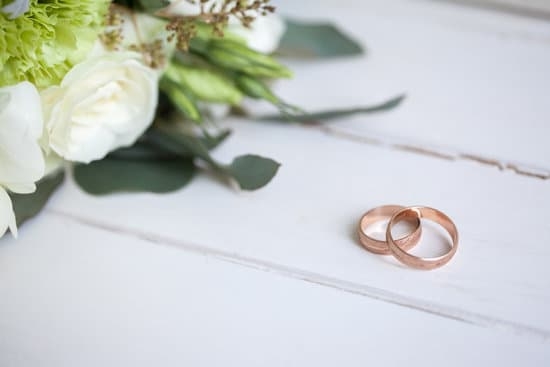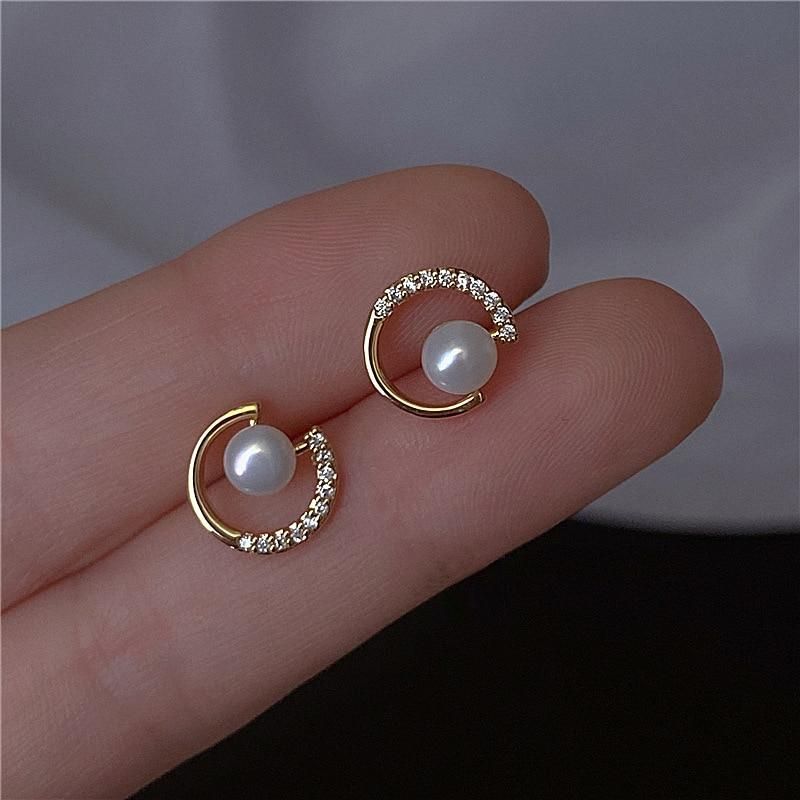Are you interested in learning how to make handmade Indian jewelry? This traditional art form is not only beautiful but also deeply rooted in the rich cultural heritage of India. From intricate designs to meaningful symbols, Indian jewelry holds a special place in the hearts of people around the world.
The history and cultural significance of Indian jewelry dates back thousands of years, with each piece reflecting the diversity and creativity of the country’s various regions. Whether it’s the vibrant colors of Rajasthan or the delicate filigree work of Orissa, Indian jewelry showcases a wide range of styles and techniques that have been passed down through generations.
In this article, we will explore the materials needed for creating handmade Indian jewelry, traditional designs and techniques, as well as a step-by-step guide to help you bring your own pieces to life. Along with tips for crafting unique and authentic designs, we will also draw inspiration from Indian jewelry makers and designers who continue to preserve this timeless art form.
Join us on this journey as we delve into the world of handmade Indian jewelry and discover how you can embrace this beautiful craft.
History and Cultural Significance of Indian Jewelry
Indian jewelry holds a rich history and cultural significance in Indian society. For centuries, jewelry has been an integral part of Indian culture, representing status, wealth, and tradition. The tradition of adorning oneself with jewelry dates back to ancient times, with mentions in religious texts and depictions in historical artifacts.
The designs of Indian jewelry are influenced by various factors such as region, religion, and social status. Different regions in India have their own distinct styles and techniques when it comes to making jewelry. For example, the intricate designs of Kundan jewelry from Rajasthan contrast with the simple elegance of temple jewelry from South India. Each piece of Indian jewelry is not only a work of art but also a reflection of the wearer’s cultural identity.
Indian jewelry is also deeply rooted in spirituality and symbolism. Certain pieces are worn for specific occasions or carry symbolic meanings. For example, the mangalsutra, a black and gold beaded necklace, is traditionally worn by married Hindu women as a symbol of their marital status.
Handcrafted Indian jewelry is treasured not only for its beauty but also for its cultural significance. The artistry behind each piece reflects the craftsmanship and traditions passed down through generations. Furthermore, the use of traditional materials and techniques adds authenticity to each handmade piece.
- Gold
- Silver
- precious gemstones such as emeralds, rubies
- sapphires
- enamel work
Overall, understanding the history and cultural significance behind Indian jewelry is essential for creating authentic handmade pieces that resonate with enthusiasts worldwide.
- Familiarize yourself with different regional styles and techniques.
- Study the symbolic meanings behind certain pieces.
- Research traditional materials used in Indian jewelry making.
Materials Needed for Handmade Indian Jewelry
When it comes to making handmade Indian jewelry, there are specific materials that are commonly used to create these unique and beautiful pieces. A key element of Indian jewelry is the use of various gemstones, such as emeralds, rubies, and sapphires, which are often intricately cut and polished to enhance their natural beauty. Additionally, metals like gold, silver, and copper are frequently used in Indian jewelry making, serving as the base for intricate designs and settings.
In addition to gemstones and metals, other essential materials for creating handmade Indian jewelry include beads, pearls, and enamel. Beads in vibrant colors are often incorporated into traditional Indian jewelry designs to add a pop of brightness and detail.
Pearls are also commonly featured in Indian jewelry, adding a touch of elegance and luxury to the pieces. Enamel work is another technique used in the creation of Indian jewelry, allowing for intricate designs and patterns to be applied to metal surfaces.
Lastly, tools such as pliers, wire cutters, soldering equipment, and polishing materials are all necessary for creating handmade Indian jewelry. These tools help artisans manipulate metals and gemstones with precision to bring their design visions to life. With the right combination of materials and tools, artisans can create stunning handmade Indian jewelry that showcases the rich cultural heritage and artistry of India.
| Materials | Description |
|---|---|
| Gemstones | Emeralds, rubies, sapphires |
| Metal | Gold, silver, copper |
| Beads & Pearls | Vibrant colored beads & elegant pearls |
| Enamel | Used for intricate designs on metal surfaces |
With these materials at hand along with creativity and skillful execution techniques; you can begin your journey towards designing your own unique piece of authentic handmade Indian jewelry.
Traditional Indian Jewelry Designs and Techniques
Distinctive Designs
Indian jewelry is known for its intricate designs and exquisite craftsmanship. From colorful beaded necklaces to elaborate gold bangles, each piece of Indian jewelry represents a rich cultural heritage. Traditional Indian jewelry designs are often inspired by nature, religion, and historical symbolism. For example, the peacock motif is commonly used in Indian jewelry to symbolize grace and beauty, while the lotus flower represents purity and spirituality. Understanding the significance of these designs is essential when creating authentic handmade Indian jewelry.
Techniques for Handcrafting Indian Jewelry
The art of making handmade Indian jewelry involves a wide range of techniques such as wire wrapping, bead weaving, metal stamping, and stone setting. These techniques require precision and skill, as well as an understanding of traditional Indian craftsmanship. For example, Kundan jewelry involves setting glass or polychrome stones into a gold foil base to create stunning pieces with vibrant colors.
Another technique called Meenakari involves applying enamel to metal surfaces to create elaborate designs. Learning these techniques is fundamental to creating authentic handmade Indian jewelry that captures the essence of this ancient art form.
Sourcing Authentic Materials
In addition to mastering the techniques, sourcing authentic materials is crucial in creating handmade Indian jewelry. Traditional materials used in Indian jewelry include semi-precious stones like rubies, emeralds, and sapphires, as well as gold, silver, and pearls.
It’s important to use high-quality materials that are sourced ethically to ensure the authenticity and value of the finished pieces. Additionally, incorporating unique elements such as antique beads or vintage pendants can add a touch of history and individuality to your handmade Indian jewelry creations.
Step-by-Step Guide to Making Handmade Indian Jewelry
Making handmade Indian jewelry is a creative and intricate process that requires patience, knowledge of traditional techniques, and an eye for detail. If you’re interested in learning how to make handmade Indian jewelry, here’s a step-by-step guide to get you started:
- Choose Your Design: The first step in making handmade Indian jewelry is to decide on the design you want to create. Whether it’s a classic jhumka earring or a statement kundan necklace, make sure to have a clear idea of the style and aesthetic you want to achieve.
- Gather Your Materials: The next step is to gather all the necessary materials for your project. This may include metals like gold, silver, or copper; gemstones such as pearls, rubies, or emeralds; beads, threads, and other decorative elements.
- Learn Traditional Techniques: Indian jewelry making often involves traditional techniques such as Kundan setting, Meenakari enameling, and Filigree work. Take the time to learn these techniques through online tutorials, workshops, or classes.
Once you have your design concept and materials ready, you can begin the process of crafting your handmade Indian jewelry. Whether you’re creating intricate earrings or ornate bracelets, following these steps will help you create beautiful pieces that showcase traditional Indian craftsmanship.
Remember that making handmade Indian jewelry is not just about creating beautiful accessories – it’s also about preserving cultural heritage and artistry. By embracing traditional techniques and designs, you can contribute to the rich legacy of Indian jewelry making while adding your own unique artistic flair. With dedication and practice, you can master the art of creating stunning handmade Indian jewelry.
Tips for Creating Unique and Authentic Indian Jewelry
When it comes to creating unique and authentic handmade Indian jewelry, there are several tips that can help you bring your designs to life. One important tip is to research traditional Indian jewelry designs and techniques. By understanding the history and cultural significance of these pieces, you can incorporate elements of authenticity into your own creations. Look for inspiration from different regions of India and explore the various styles and materials used in their jewelry-making traditions.
Another tip for creating unique Indian jewelry is to source high-quality materials that are true to the traditional craft. This may include using genuine gemstones, precious metals, and other natural materials that have been used in Indian jewelry for centuries. Pay attention to details such as intricate filigree work, enamel embellishments, and vibrant color palettes that are characteristic of Indian jewelry.
In addition to materials, consider incorporating traditional Indian symbols and motifs into your designs. Popular symbols in Indian jewelry include the lotus flower, peacock feathers, elephants, and religious symbols such as the Om symbol.
Carefully integrating these elements into your pieces can add a layer of authenticity and cultural significance to your handmade Indian jewelry. By following these tips, you can create truly unique and authentic pieces that honor the rich tradition of Indian jewelry-making while adding your own creative flair.
Inspiration From Indian Jewelry Makers and Designers
Indian jewelry has a rich history and a deep cultural significance in India. The art of making handmade Indian jewelry has been passed down through generations, with each piece telling a story and reflecting the traditions and beliefs of the Indian people. One of the best sources of inspiration for creating authentic and unique Indian jewelry is the work of Indian jewelry makers and designers who have mastered the craft.
Traditional Techniques
Indian jewelry makers and designers often draw inspiration from traditional techniques that have been used for centuries. These techniques include intricate metalwork, filigree, enameling, stone setting, and beadwork. By studying and understanding these traditional techniques, aspiring jewelry makers can incorporate them into their own designs while adding their own modern twist.
Symbolism and Meaning
Indian jewelry is often adorned with symbols that hold deep meaning in Indian culture. For example, the lotus flower symbolizes purity and enlightenment, while the peacock feather represents beauty and grace. Jewelry makers can take inspiration from these meaningful symbols to create pieces that resonate with both their cultural heritage and their personal artistic vision.
Use of Color
Indian jewelry is known for its vibrant use of color, with gemstones such as rubies, emeralds, sapphires, and pearls being commonly used in traditional designs. Indian jewelry makers often use these colorful gemstones to create eye-catching pieces that reflect the beauty of nature. Aspiring jewelry makers can draw inspiration from the use of color in traditional Indian jewelry to create visually stunning pieces that capture the essence of Indian craftsmanship.
By seeking inspiration from Indian jewelry makers and designers, aspiring artisans can gain valuable insights into how to make handmade Indian jewelry that is both authentic and truly one-of-a-kind.
Marketing and Selling Handmade Indian Jewelry
Once you have created your beautiful handmade Indian jewelry, the next step is to market and sell your creations. There are various avenues you can explore to showcase and sell your jewelry, both online and in person.
One popular option is to set up an online store on platforms such as Etsy or Shopify, where you can display your pieces and reach a global audience. Utilizing social media platforms like Instagram and Facebook can also help you market your products and attract potential customers.
Another way to market and sell handmade Indian jewelry is by participating in craft fairs, trade shows, and pop-up markets. These events provide an opportunity for you to interact with customers face-to-face, share the story behind your creations, and establish a personal connection with buyers. Additionally, consignment or wholesale opportunities with local boutiques or stores that align with the aesthetic of your jewelry can also help expand your reach.
In order to effectively market and sell your handmade Indian jewelry, it’s important to create a brand identity that communicates the unique cultural significance of your designs. Emphasize the authenticity of your pieces by highlighting the traditional techniques and materials used in their creation. By incorporating elements of storytelling into your marketing efforts, you can connect with customers on a deeper level and convey the artistry behind each piece of jewelry.
As you navigate the world of marketing and selling handmade Indian jewelry, remember that building relationships with customers and maintaining transparency about the craftsmanship involved in creating each piece will be key to establishing a loyal customer base who appreciate the artistry behind traditional Indian jewelry making techniques.
Conclusion
In conclusion, the art of handmade Indian jewelry is a rich and vibrant tradition that holds deep cultural significance. Through the centuries, Indian jewelry has not only been a symbol of wealth and status but also a reflection of the country’s diverse heritage and traditions. The intricate designs, traditional techniques, and use of colorful gemstones and metals make Indian jewelry truly unique and captivating.
Learning how to make handmade Indian jewelry is a rewarding experience that allows for creativity, self-expression, and an appreciation for Indian craftsmanship. By understanding the history and cultural significance of Indian jewelry, aspiring artisans can infuse their creations with authenticity and meaning. The materials needed for handmade Indian jewelry are easily accessible, allowing for individuals to explore this time-honored craft in their own homes.
As one delves into the step-by-step process of creating handmade Indian jewelry, they can draw inspiration from traditional designs and techniques while also incorporating their own artistic vision. Additionally, seeking inspiration from Indian jewelry makers and designers can provide valuable insights into the art form, as well as opportunities for collaboration and learning from seasoned artists.
Whether it’s for personal enjoyment or venturing into marketing and selling handmade Indian jewelry, embracing this art form opens up a world of creativity and cultural enrichment. Overall, making handmade Indian jewelry is not just about crafting beautiful adornments but also about honoring a tradition that has stood the test of time.
Frequently Asked Questions
How Do You Make Native American Jewelry?
Native American jewelry is often made using traditional techniques such as metal stamping, silver casting, and beadwork. The materials used can include silver, turquoise, coral, and other gemstones. Jewelry making is a skill passed down through generations.
How Do I Start Making My Own Jewellery?
To start making your own jewelry, you can begin by learning basic techniques such as wire wrapping, beading, and simple metalworking. Research different styles and materials to find what interests you. Invest in quality tools and materials to create professional-looking pieces.
What Metal Is Indian Jewelry Made Of?
Indian jewelry is often made from various metals including silver, gold, and copper. Silver is particularly prominent in Navajo and Hopi jewelry while gold is more common in traditional Indian bridal jewelry. Each metal has its own significance and cultural importance in Indian jewelry making.

Welcome to my jewelry blog! My name is Sarah and I am the owner of this blog.
I love making jewelry and sharing my creations with others.
So whether you’re someone who loves wearing jewelry yourself or simply enjoys learning about it, be sure to check out my blog for insightful posts on everything related to this exciting topic!





